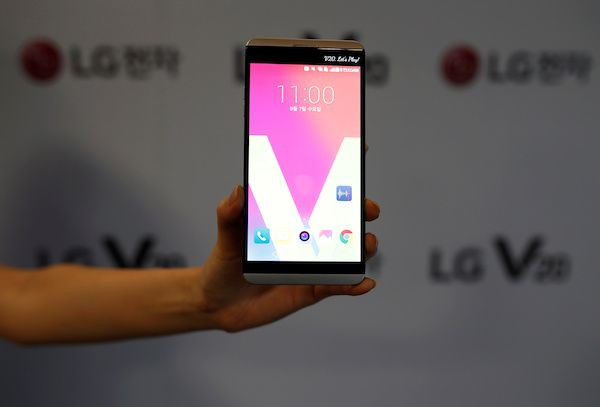LG V30 Vs. V20: Is The New Android Phablet Worth The Upgrade?

The successor to last year’s LG V20 is finally here. South Korean mobile phone manufacture LG finally took the wraps off of the V30 this Thursday. As expected, the new handset is sporting a very different form factor compared to its predecessor. For one thing, it does not come with the signature secondary display of the first two V series installments. So how does the V30 fare when pitted against the V20? Let’s find out.
Performance
It’s not surprising how the V30 comes with more processing power than the V20. A 1-year interval between the iterations makes a huge difference, especially since the tech industry is very fast-paced nowadays. When the V20 was launched, the top-of-the-line Qualcomm SoC available on the market was the Snapdragon 820, so the handset debuted with said chip coupled with the Adreno 530. The Snapdragon 820 was a Quad-core processor comprising two 2.15 GHz Kryo and two 1.6 GHz Kryo cores. The V20 also housed 4GB of RAM and it came in two storage options: 32GB and 64GB.
This year, Qualcomm introduced the10-nanometer Snapdragon 835 chip, which quickly became the processor of choice for flagship handsets by most phone manufacturers including LG. The V30 is powered by the powerful mobile platform processor that’s 35 percent smaller and uses 25 percent less power than its predecessor. By integrating cutting edge technologies, the Snapdragon 835 is capable of supporting extraordinary experiences and demanding features. It does a fine job in enabling lighting-fast streaming of high quality audio and video content, as well as lifelike VR and AR experiences. It also supports advanced camera technologies, machine learning capabilities and Gigabit Class download speeds.
The Snapdragon 835 is an Octa-core chip that is composed of four 2.45 GHz and four 1.9 GHz cores. Coupled with the Adreno 540, the LG V30 is one powerhouse that’s built to impress in terms of handling very demanding 3D games and rendering mobile VR and 4K content. LG may have also intended the V30 to be a tough competitor for other flagship smartphones not just to its predecessor, for the handset comes with a high-end storage configuration of 6GB RAM and 128GB internal memory. There is also the 4GB RAM/64GB storage configuration, which is present in the more affordable variant of the smartphone.
Display
When it comes to display, it’s very obvious that LG wanted to take the V series to a different path when it was developing the V30. The new phablet definitely looks nothing like the V20 due to the redesigned form factor of the device. Unlike the minimal jump from the V10 to the V20 in terms of design, LG chose to embrace the new FullVision experience it launched alongside the G6 early this year. Hence, the V30 does not sport a secondary display and instead boasts of an almost bezel-less front.
Specifications-wise, the display on the V30 also easily trumps that on the V20. The V30’s screen is a 6-inch plastic-OLED touchscreen panel that has a 2880 x 1440 screen resolution and 537 ppi pixel density. It is protected by Corning Gorilla Glass 5 against scratches, and it has features like Dolby Vision and HDR10. The absence of the secondary display is filled in by the Floating Bar feature that’s part of the user-interface of the device. On the contrary, the V20 launched with a 1440 x 2560 5.7-inch IPS LCD display with 513 ppi pixel density. The year-old flagship also came a 160 x 1040p 2.1-inch secondary display that’s designed to give quick access to certain features and apps. The front panel of the V20 is protected by Corning Gorilla Glass 4, which unfortunately isn’t as strong and scratch-resistant as the Gorilla Glass 5.
Camera Technology
The V20 debuted with a dual-lens module that’s composed of a 16-megapixel lens and an 8-megapixel lens. The two work together to capture good quality photos. The module is equipped laser autofocus, dual-LED flash and OIS. Up front, the V20 came with a 5-megapixel shooter that’s good for taking selfies and making video calls.
LG used a slightly different approach in making the primary camera for the V30. The new phablet’s back camera module features two lenses, one with a 16-megapixel sensor and another with 13 megapixels. The 16-megapixel lens has the largest aperture on a mobile phone camera. The f/1.6 aperture makes it possible for the device to take good quality pictures even in low light conditions. LG also kept the pixels on the selfie camera of the device, so the V30 still comes wih a 5-megapixel front-facing camera.
Miscellaneous
Like the V20, the V30 also has Quad DAC. However, the one on the V30 is more advanced and comes with digital filters and sound presets for more customizable options. As a result, the V30 offers a more premium audio experience. It’s also important to note that both the V20 and the V30 are B&O Play certified.
Meanwhile, both the V20 and the V30 have fast-charging batteries thanks to Quick Charge 3.0, and they also come with rear-mounted fingerprint sensors. They differ on the type of USB ports they have. The V20 has USB 2.0 and a Type-C 1.0 reversible connector. On the other hand, the V30 has USB 3.1 and a Type-C 1.0 reversible connecter. They also differ in terms of battery. The V20 has a removable 3,200 mAh battery, while the V30 has a non-removable 3,300 mAh one. The V20 is available in Titan, Silver and Pink, while the V30 will come in four color options: Aurora Black, Cloud Silver, Moroccan Blue and Lavender Violet 2.
On the whole, it’s easy to see that the V30 is a significant upgrade from the V20 not only because of its redesigned body. It also has improved features and more advanced components that make it a worthy upgrade from its predecessor.
© Copyright IBTimes 2025. All rights reserved.



















